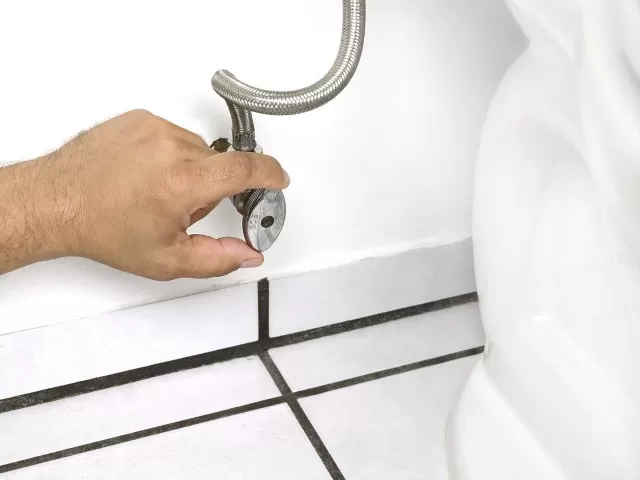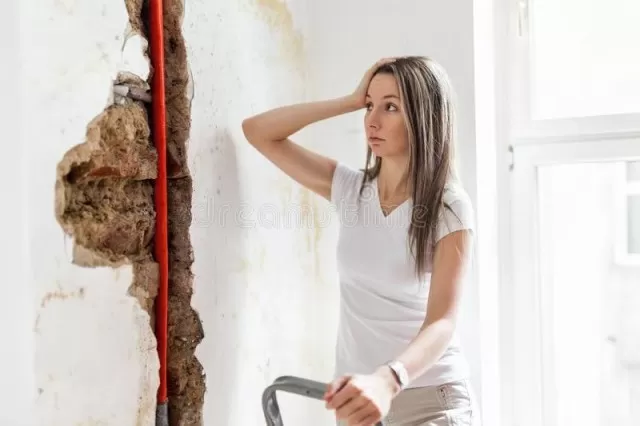Discover the importance of knowing the location of your home’s water shut off valve and learn essential steps to quickly turn off the water supply in case of a plumbing crisis.
Introduction to Residential Water Valves: Gate Valves and Ball Valves

Water valves play a crucial role in regulating the flow of water in plumbing systems.
In residential settings, two types of valves, namely gate valves and ball valves, are widely used as building control valves. These valves are available in sizes ranging from ½-inch to 1 ½-inch and can be easily manipulated by hand, eliminating the need for additional tools.
Gate valves feature a circular handle connected to a stem, which is attached to the valve body.
By rotating the handle, the gate inside the valve body can be gradually closed, effectively blocking the water flow. Conversely, turning the valve handle in the opposite direction opens the gate, allowing water to flow freely through the system.
Ball valves, on the other hand, employ a different mechanism for controlling water flow.
They consist of a lever handle attached to a ball-shaped disc inside the valve body. When the lever handle is aligned with the pipe, the ball valve is open, enabling water to pass through.
Rotating the handle perpendicular to the pipe shuts off the valve, obstructing the water flow.
Both gate valves and ball valves offer reliable and efficient control over the water supply in residential plumbing systems.
However, it is essential to consider the specific requirements of the plumbing scenario to determine the most suitable valve type for a given application.
Overall, understanding the different types of water valves, such as gate valves and ball valves, is essential for homeowners and plumbers alike.
By knowing how these valves function and when to use them, one can effectively manage and control the water flow within their residential plumbing systems.
Locating the Main Water Shut Off Valve for Your Home
Knowing the location of the main water shut off valve in your home is crucial for emergencies and routine maintenance.
Typically, this valve can be found on the main water line where it enters your house. Let’s explore some common areas where you can locate the main water shut off valve.
In most cases, the main water shut off valve is situated in a basement, cellar, or crawlspace.
This is because the water line extends from the neighborhood water main and enters the home from beneath the ground. By locating the valve in these areas, it becomes easily accessible for homeowners.
However, in warmer regions where freezing pipes are not a concern, the main water shut off valve may also be found outdoors on an exterior wall or buried near the street.
This placement allows for convenient access without the need to enter the house. If you live in such an area, it’s worth checking these outdoor locations for the valve.
To find the main water shut off valve in your home, start by inspecting the basement, cellar, or crawlspace.
Look for a valve along the main water line, usually near the point where it enters your property. It may be connected to a pipe or positioned on its own.
If you don’t locate the valve inside the house, check outside.
Look for a valve on an exterior wall, typically near the area where the water line enters your property. Alternatively, contact your local water utility company or consult your home’s blueprint for guidance on the valve’s location.
Remember, in emergency situations where immediate action is required to stop the water flow, locating the main water shut off valve becomes crucial.
Familiarize yourself with its position beforehand to save valuable time during an unforeseen plumbing issue.
By knowing the whereabouts of the main water shut off valve in your home, you can confidently and swiftly respond to water-related emergencies or perform routine maintenance tasks that may require shutting off the water supply.
How to Shut off Water Supply to Individual Fixtures and Appliances

In certain situations, it’s more convenient and efficient to turn off the water supply to specific plumbing fixtures or appliances rather than shutting off the water to the entire house.
This not only saves time by eliminating the need to drain the entire system but also allows you to continue using other plumbing fixtures in your home. Let’s explore how you can turn off the water supply to individual fixtures and appliances.
For instance, if you’re replacing a faucet at the kitchen sink, there is often an isolation valve located under the sink.
By turning off this valve, you can halt the water flow to the sink without affecting the rest of the plumbing system. This valve can usually be operated by hand and doesn’t require any tools.
Similarly, when it comes to repairing or replacing fixtures such as toilets, dishwashers, or clothes washers, there are typically isolation valves located nearby.
These valves are specifically installed to control the water supply to these individual fixtures and appliances. You can easily operate these valves by hand, making the process hassle-free.
To locate the isolation valve for a particular fixture or appliance, start by examining the area around the fixture.
Look for a small valve positioned along the water supply line leading to the fixture. It’s often located near the base of the fixture or appliance or in the adjacent wall or cabinet.
Once you’ve identified the isolation valve, simply turn it clockwise to shut off the water supply.
This will effectively stop water flow to the specific fixture or appliance, allowing you to carry out necessary repairs or replacements.
Remember, it’s important to test that the water supply has been successfully shut off by turning on the fixture or appliance.
If no water flows, it indicates that the isolation valve has been properly closed.
By learning how to turn off the water supply to individual fixtures and appliances, you can perform maintenance tasks or make repairs without inconveniencing the rest of your home’s plumbing system.
This knowledge empowers you to handle plumbing issues efficiently and effectively.
Importance of Main Shutoff Valve for Plumbing Emergencies

The main shutoff valve in your plumbing system serves a critical purpose not only for routine maintenance and repairs but also during plumbing emergencies.
Understanding the significance of this valve can help mitigate the risk of water damage, costly repairs, and potential health hazards.
One of the primary reasons to have a functioning main shutoff valve is to address plumbing leaks and prevent flooding.
If a plumbing fitting starts leaking or a pipe ruptures, water can rapidly escape and cause extensive damage to your home. By quickly shutting off the main water supply using the shutoff valve, you can effectively stop the flow of water and minimize the potential for further damage.
In addition to preventing immediate water damage, turning off the main shutoff valve during a plumbing emergency can also help mitigate long-term issues.
Excessive moisture from leaks or flooding can create an environment conducive to mold and mildew growth. These microorganisms not only cause unpleasant odors and damage to surfaces but can also pose health risks to you and your family.
By promptly shutting off the water supply, you can prevent the spread of moisture.
*The information is for reference only.